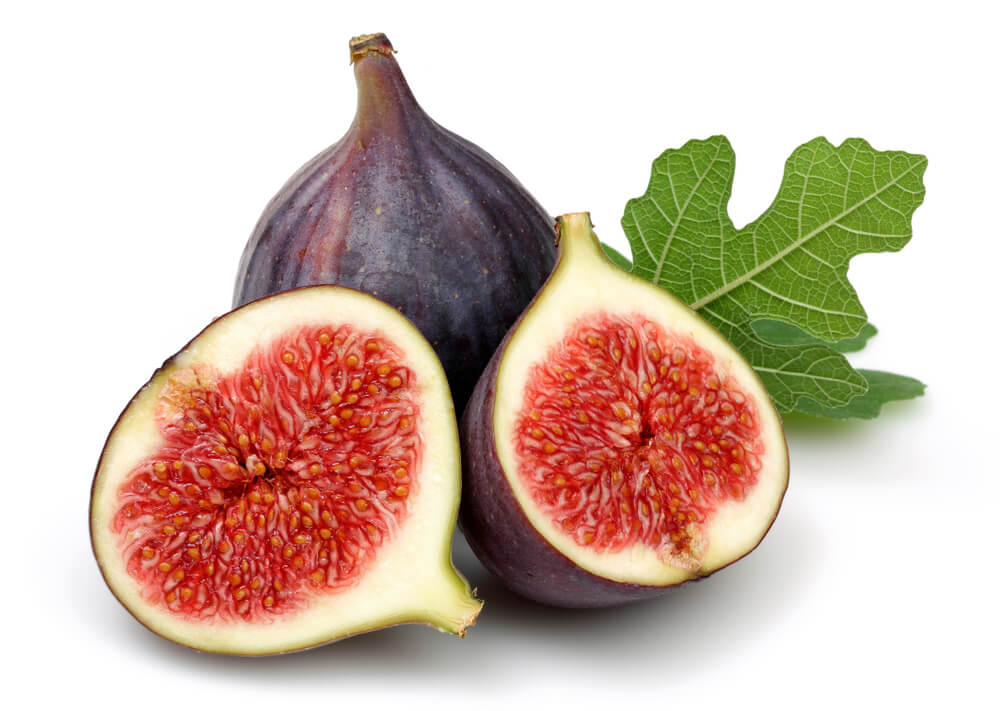While you can freeze almost any fruit or vegetable, some foods tend to lend themselves better to the freezing process than others. Figs, an intriguing yet delectable fruit is one of those foods. And if you were wondering, can you freeze figs, you’ll be pleased to know that the answer is yes.
How to Freeze Figs

Step One: Wash Your Figs
Before you do anything with your figs, you want to make sure that your figs are nice and clean before storing them away. Even if you decide to peel your foods and then store them, you should wash them so that you don’t transfer any bacteria to the inside of the figs when you cut and prep them for storage.
To wash your figs, all you need is to rinse them under some cool water using clean hands. Be careful as you wash them because figs can be delicate to work with, and certain types are easy to bruise.
Step Two: Cut Your Figs into Quarters
If you cut your figs into quarters, they will be able to be that lot easier when you are ready to use them. The other benefit of slicing your figs into quarters before freezing them is that it allows you to use them in smoothies, salads, and other dishes a lot easier because they are pre-cut and ready to be peeled.
If you plan on making a jam or a sauce with the figs that you are freezing, it might be beneficial for you to peel your figs before freezing them. This will make it a lot easier on you when it comes to thawing them out. Be sure that your hands are nice and clean when you peel them.
Step Three: Lay Your Figs on a Baking Sheet
The last thing you want when you open up a batch of frozen figs is clumped up quarters. In order to avoid your fig quarters from clumping up, lay them down on a baking sheet in a single fashion line. You want to have just enough room that the figs are not touching one another.
Place your baking sheet of separated figs into the freezer and allow the figs to freeze completely. Once the figs are frozen, you can transfer them to a freezer bag or a sealed storage container for final storage. Doing this extra step of prep will keep your figs from clumping together while they are in storage and it will be a lot easier to work when they thaw.
Bonus Step: Add “Sugar Pack”
“Sugar pack” is a sugar syrup that you can cover your figs in before you freeze them. By covering your figs in a sugar pack, you will get a more vibrant flavor and texture when you thaw your figs out. It’s important that if you do choose to use this syrup, you thaw your figs and then drain any remaining syrup from the figs before you use them.
Figs are naturally sweet, and any additional glucose additives can overpower the dish you are using your figs in. If you cannot get your hands on a sugar pack syrup, then you can make your own sugar pack.
Simply sprinkle your fig quarters with sugar, making sure to coat them well, and then allow the sugar to draw out moisture from the figs until it creates a syrup. Let the figs simmer in the sugar syrup for about 20 minutes before you start the freezing process.
How Freezing Affects Figs
When frozen figs thaw out, the fruit’s cell walls break down due to ice crystal forming during the freezing process. This gives figs a very mushy and sometimes watery texture. Dishes that call for plump fresh figs would not fare well with frozen figs.
Changes in Color
Along with the texture of the figs, freezing figs will also change the color of the fruit. Things will naturally darken during the freezing process. If you care about your figs’ color when you use them after you thaw them, there is one way to work around it.
You can coat your fig quarters in a simple syrup composed of ascorbic acid and lemon juice. To do this, use three tablespoons of ascorbic acid per quart of fruit and add in 1/2 cup of lemon juice per cup of fruit. Mix the two ingredients until you get a syrupy mixture. Coat your fig quarters in this mixture before you freeze them, and you should be able to retain most of your figs original color when you thaw them out.
What to Do with Frozen Figs
- Smoothies
- Jam
- Homemade ice cream
- Fruit sauces
- Fruit syrups
If you are someone who loves figs and have wondered if you can freeze figs, then we hope our guide has helped you understand how to work with your figs so that you can make them last longer.
Let us know if you have ever worked with frozen figs and what your favorite dishes to use them in are. Here’s to happy freezing of tasty figs!







